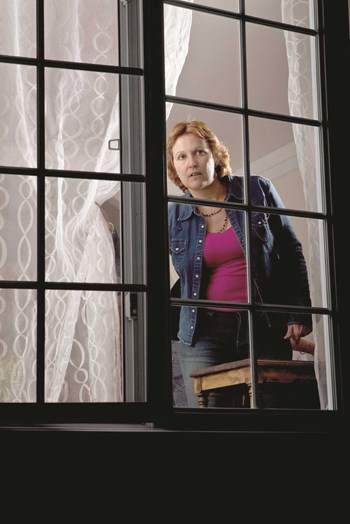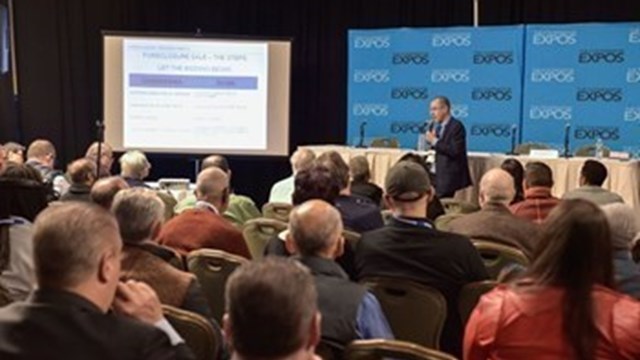
It’s often said that safety starts at home—and while many HOAs spend lots of money on sophisticated security and access control systems to protect residents and property, others opt for lower-tech approaches to neighborhood security and crime prevention.
One such solution is to have a group of concerned neighbors make a commitment to be vigilant and observant, and to do what they can in their own community to prevent crimes like vandalism, burglary, theft or even arson.
Neighborhood Watch, Block Watch, Building Watch, CrimeWatch—whatever you choose to call it, its one of the most effective—and least costly—ways to prevent crime. It also forges bonds among residents and improves relations between police and the communities they serve.
Watch This
Even if an association already employs electronic surveillance cameras and other high-tech techniques, there are always blind spots. Electronic surveillance, as important as it is, can give an association a false sense of security. Experts believe that crime prevention methods work best when combined with other forms of security measures; surveillance systems are only useful in certain areas, and security guards or roving staff vehicles can’t be everywhere at once, but a combination of the two can help minimize those blind spots.
Another component of a really thorough security network is the community-run watch group. Throughout the country, dramatic decreases in burglary and related offenses are reported by law enforcement in communities with active watch programs, says Michelle Boykins, a spokeswoman for the National Crime Prevention Council. Boykins quotes as evidence a 2008 study by the U.S. Justice Department, “Does Neighborhood Watch Reduce Crime?” On average, the study says, there was a 16 percent decrease in crime in communities with a watch group compared to control areas. However, the study cautions, “the results of evaluations are mixed and show that some programs work well, while others appear to work less well.”
In 1993, Chicago Police Superintendent Matt L. Rodriguez instituted a strategy of community policing specific to the Windy City: the Chicago Alternative Policing Strategy, (CAPS for short) is a partnership between the police, other city agencies and the community, all working together to solve neighborhood crime problems. CAPS has been cited as one of the most ambitious community policing initiatives in the country, and has been recognized by security experts across the U.S. as a leading prototype for community watch initiatives.
Establishing a Group
According to Boykins, “In a condo or apartment complex, it may be more difficult to know all of your neighbors and to know if someone doesn’t belong or should be considered suspicious.” A motivated individual, a few concerned residents, a community organization or law enforcement agency—or a combination of any of the above—can spearhead the efforts to establish a neighborhood watch group. Other than the investment of personal time in organizing and administering the group, it costs very little to start one. You do, however, need willing participants and enough interest and support from the community or association to get things moving and keep them active and vital.
“When I moved into the neighborhood that I am living in Chicago about three years ago, I saw that there were gates up around people’s houses and bars on their windows, so it was hard to talk to my neighbors,” says Steve Niketopoulos, founder of the Ukranian Village Neighborhood Watch, “but when I did talk them, I heard about a lot of break-ins and stolen cars and bikes. I used social media to create a real-time neighborhood watch with thousands of neighbors. It allows for more discussion and more education. So far it's worked wonders.”
Stories of crime forced another neighborhood group into action. In another part of the city, “A 13 year-old boy got jumped by a gang member who didn't even live in the area, and the neighborhood got so irate about it that people wanted to do something,” says Al Cacciottolo, president of the Garfield Ridge Neighborhood Watch. “People were mad at the police and mad at the local politicians that this could happen, and about 30 people got together in what became the inception of the neighborhood watch group. We’re at 100 members now, but we’ve got over 4,500 community residents who are more aware of their surroundings. I think we’ve really succeeded in that, even though only 100 people joined our group.”
How They Work
Once citizen-led watch groups are established, they work to fight crime in several ways. Participants can conduct home security surveys, give their fellow residents tips for securing their homes while they're away on vacation, post yard signs and window stickers letting would-be burglars know they're being watched, install more powerful outdoor lighting, just to name a few.
In Cacciottolo's community, “We allow people to patrol anytime they want to. They have to let the team leader know they are going out, and we’ll let the police know that we have however many groups out patrolling the area, so law enforcement knows what’s going on. We will give them a specific area to cruise. We are the eyes and ears for the police. We also put together a ‘hot spot list,’ houses that were known gang houses or drug houses or vacant houses. We would patrol past those houses and if there were an issue we’d call the police. One of the rules and regulations is that we cannot act like the police. I don’t want our members to get involved with getting themselves in a spot where they could get hurt.”
There are many things that watch groups can look out for. Among the more serious “red flags” are someone looking into windows or parked cars, open garage doors, property being taken out of houses where no one is home, lighting fixtures that are broken out, cars or vans moving slowly with no apparent destination, strangers getting out of a car to talk to a child, groups of unknown young people wandering around, newspapers piling up in front of a home and abandoned cars.
“What we do is turn everyone in the group into a watchful eye. What we do is we ask everyone when they’re walking the dog, on they’re way home, going to the grocery store to take a look down alleys to see if you see anybody meandering or looking over fences, to see if there are people pulling on car door handles and to look in-between houses,” says Niketopoulos. “We are trying to turn everybody into that watchful eye and then everybody reports it to Facebook in real time. I, along with six others will do drive-arounds in the neighborhood, but I want it to be a carefully run thing so we try not to get too many people involved and physically going and trying to curb a crime. We’re pretty closely tied to the police department. We’ve been able to build up a lot of immediate contacts if we see something live.”
In addition to looking at suspicious situations, members of watch groups can also look after people who may be isolated and vulnerable, such as the elderly and the disabled, and take note of situations that might invite trouble, such as broken or non-working street lights. And above all, members must stay alert.
According to Boykins, program watch groups can sponsor bike safety workshops, checking community lighting after the sun goes down and neighborhood walking clubs.
Zimmerman Case Atypical
Nowadays, unfortunately, when people think of neighborhood watch groups, they all too often think of the case of George Zimmerman, a volunteer member of a neighborhood watch group in Florida, who, in February 2012, followed an unarmed teenager, Trayvon Martin, whom he thought was acting suspiciously. Despite the fact that a police officer told Zimmerman he didn’t have to follow Martin, Zimmerman continued his pursuit and, after a struggle, shot and killed the unarmed teen. The case became a cause célèbre, with widespread allegations of racism on Zimmerman’s part, and Zimmerman’s eventual acquittal on second-degree murder charges didn’t end the controversy.
In the wake of the Zimmerman case, there were some condemnations of neighborhood watch groups in general as vigilantes. But soon, people realized that there is a big difference between a legitimate, well-organized neighborhood watch group, which acts as the eyes and ears of the community, and vigilantism, or people taking the law into their own hands. The key seems to be cooperation between the watch group members and law enforcement.
While, thankfully, situations like the Zimmerman case are very rare, it isn’t unknown to have a volunteer on a Neighborhood Watch group who seems a little over-zealous. If this is the case, says Boykins, “then it is best to discuss their behavior with them or hold a meeting with the watch group to discuss guidelines and parameters for all volunteers to follow.”
For most condos and HOA developments, especially those that are spread out, a neighborhood watch group would be worth a try. Residents or boards that are interested should contact their local police or sheriff’s departments.
“If you live in a condo get to know who your neighbors are so that when you see someone in the hallway you don’t feel nervous about saying hello,” says Niketopoulos. “If you familiarize yourself with people in your building you won’t have any hesitation saying ‘Oh hi, are you here to see someone in the building?’”
Raanan Geberer is a freelance writer and a frequent contributor to The Chicagoland Cooperator. Staff writer Christy Smith-Sloman contributed to this article.





Comments
Leave a Comment